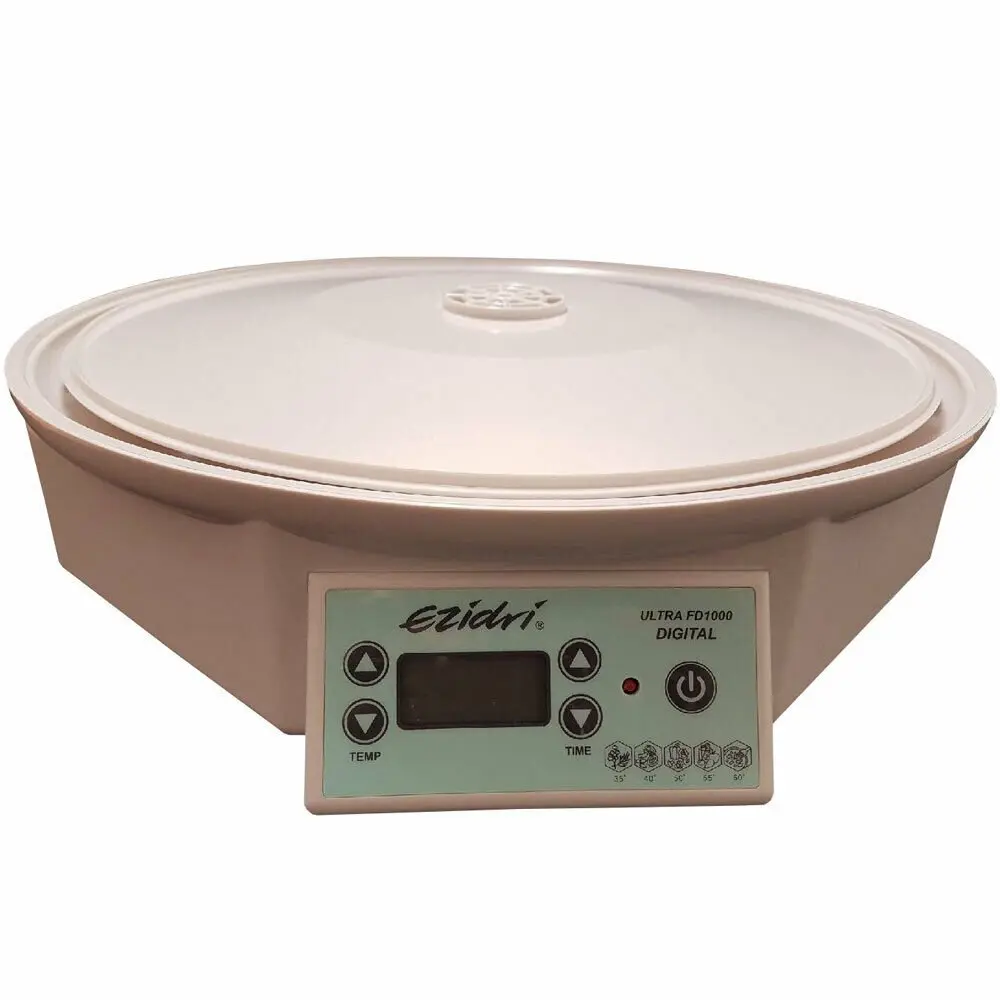The art of cooking has evolved significantly over the years, and the rise of a commercial dehydrator has proven to be a game-changer for many food entrepreneurs and restaurateurs. With the ability to preserve and enhance the flavours and textures of a wide range of ingredients, these dehydrators have opened up new possibilities for innovative recipes, increased efficiency in the kitchen, and expanded product offerings. However, with so many options on the market, choosing the suitable dehydrator for your business can take time and effort.
The Benefits of Dehydrating in Your Commercial Kitchen
The world of commercial food production is constantly evolving, and one trend that has gained significant attention in recent years is dehydrating. Dehydrating, or drying, food is a technique that involves removing the natural moisture from food to preserve it, and it’s a game-changer for commercial kitchens. Choosing a suitable dehydrator for your business can unlock many possibilities and reap numerous benefits.
First and foremost, dehydrating increases shelf life. When dehydrating food, you can significantly extend its shelf life, reducing food waste and saving your business money. It is essential for businesses that rely on bulk orders or have a high turnover of products. Dehydrated foods are also incredibly lightweight, making them easier to transport and store, which is a significant advantage for businesses that operate on a large scale.
Another significant benefit of dehydrating is the ability to preserve nutrients and flavours. When food is dehydrated, the natural enzymes and flavours are preserved, resulting in a product that is not only delicious but also packed with nutrients. It is essential for businesses that focus on providing healthy, wholesome products to their customers.
Finally, dehydrating opens up a world of new product possibilities. Dehydrating fruits, vegetables, meats, and other ingredients can create a wide range of innovative products used in various dishes. The possibilities are endless, from homemade trail mix to dried fruit leather, and the suitable dehydrator can help you unlock them.
What to Look for in a Food Dryer
When selecting a food dryer, several key features should be considered to ensure you choose a model that meets your needs effectively. Here are some critical factors to look for:
- Capacity and Size: Determine how much food you plan to dry at once. If you need to dehydrate large batches, look for a dryer with a larger capacity or expandable trays.
- Temperature Control: Opt for a dryer with adjustable temperature settings. Different foods require different drying temperatures to preserve their texture and nutritional value.
- Airflow and Heating: Consistent airflow and uniform heat distribution are crucial for even drying. Choose a model with horizontal or vertical airflow systems designed to prevent uneven drying and reduce the need for tray rotation.
- Ease of Use and Cleaning: Look for user-friendly controls and features like digital timers and auto shut-off. Removable and dishwasher-safe trays can make cleaning easier.
- Noise Level: Consider the dryer’s noise level, especially if you plan to use it frequently or in a living space. Some models are designed to operate more quietly.
Types of Commercial Dehydrators Australia: A Comparison
When choosing a suitable dehydrator for your business, it’s essential to consider the type of dehydrator that best suits your specific needs. The market is flooded with various commercial dehydrators Australia, each with unique features, benefits, and limitations. In this section, we’ll delve into the most common types of dehydrators, comparing their characteristics, advantages, and disadvantages to help you make an informed decision. From the traditional tray-style dehydrators to the more advanced spiral and drum-style models, we’ll explore options to ensure you find the perfect fit for your business.
Tray-style dehydrators, for instance, are a classic choice for many dehydrators. They feature multiple trays, allowing you to dry various batches of products simultaneously. These dehydrators are often accessible to clean and maintain, making them popular for food establishments. However, they can be limited in capacity, and the drying time may be longer due to the limited air circulation.
On the other hand, spiral and drum-style dehydrators offer more advanced technology, often featuring larger capacities and faster drying times. These dehydrators utilize a spiral or drum-shaped design to ensure even air circulation, resulting in a more uniform drying process. While they may be more expensive, they can be an excellent option for businesses that require high-volume production.
In addition to these main types, specialised dehydrators are designed for specific applications, such as vacuum dehydrators for delicate herbs and leafy greens or belt dehydrators for high-volume production. When selecting a dehydrator, you must consider your specific needs, including the type of products you’ll be dehydrating, the capacity required, and the desired level of control over the drying process. By understanding the different types of commercial available, you’ll be better equipped to decide and choose the suitable machine for your business.
Factors to Consider When Choosing a Dehydrator
When it comes to selecting the perfect dehydrator for your business, several key factors must be considered to ensure an informed decision. First and foremost, you’ll want to think about the type of products you’ll be dehydrating. Will you produce jerky, fruits, vegetables, or a combination of all three? Different products require different temperature and time settings, so choosing a dehydrator that can accommodate your specific needs is essential.
Next, consider the dehydrator’s size and capacity. If you plan to produce large quantities, you’ll need a machine to handle the volume. On the other hand, if you’re starting and testing the waters, a smaller, more compact dehydrator may be a better fit.
Another crucial consideration is the dehydrator’s power and energy efficiency. You’ll want to choose a machine that uses minimal energy while still producing high-quality results. Look for a dehydrator with a low energy consumption rating, and consider the cost of running the machine over the course of a year.
Finally, consider the warranty and customer support offered by the manufacturer. A good warranty can provide peace of mind, and excellent customer support can be a lifesaver if you encounter any issues with your dehydrator. By carefully considering these factors, you’ll be able to find the perfect dehydrator for your business needs.
Cleaning and Maintenance: How to Choose a Dehydrator That’s Easy to Clean
When it comes to choosing a dehydrator for your business, it’s easy to get caught up in the excitement of having a new machine and overlooking the importance of ease of use and maintenance. However, a dehydrator that’s difficult to clean can be a major headache, especially when working in a fast-paced kitchen environment. Imagine spending hours preparing and cooking a batch of food, only to spend just as long cleaning up the mess afterwards. It’s not only a waste of time but can also lead to the buildup of bacteria and other contaminants, which can compromise the quality of your products.
Look for a dehydrator with a design that makes cleaning a breeze. Some features include a removable tray or basket system, allowing you to lift and wash individual components easily. A dehydrator with a smooth, non-porous surface is also a plus, as it will be easier to wipe down and sanitize.
Additionally, consider a dehydrator with a drain system or a drip tray, which can make cleaning up excess liquid and food particles a much simpler task. Choosing a dehydrator that’s easy to clean and maintain and will save time and reduce stress in the kitchen, allowing you to focus on what matters most – producing high-quality products for your customers.
Additional Features to Consider
When considering a dehydrator, here are some additional features you might find helpful:
- Temperature Control: Look for models that offer adjustable temperature settings to accommodate different types of food or specific dehydration needs.
- Timer: A built-in timer can be handy for setting precise drying times, especially if you needed trememberk on your food.
- Airflow System: Opt for dehydrators with good airflow design to ensure even drying across all trays, preventing the need for tray rotation.
- Number of Trays: Based on the volume of food you plan to dehydrate at once, consider how many trays you might need.
- Transparent Trays or Door: Some models have transparent trays or doors, which allow you to monitor the drying progress without opening the dehydrator.
- Ease of Cleaning: Removable trays and easy-to-clean surfaces simplify maintenance.
- Quiet Operation: If the noise level is a concern, look for dehydrators that operate quietly.
- Expandability: Some dehydrators can expand with additional trays if you anticipate needing more drying space.
These features can enhance your dehydrating experience and make it more convenient and practical.
Common Mistakes to Avoid When Choosing a Dehydrator
When it comes to choosing the suitable dehydrator for your business, it’s easy to get caught up in the excitement of new technology and innovative features. However, overlooking crucial details can lead to a purchase that falls below your expectations, ultimately affecting your business’s bottom line. In this section, we’ll highlight some common mistakes to avoid when selecting a dehydrator, ensuring you make an informed decision that meets your needs.
First and foremost, don’t compromise on power and capacity. A dehydrator needs to handle large quantities of food quickly and efficiently. If you’re processing high volumes, look for a dehydrator with a high wattage and a spacious capacity to accommodate your needs. Failing to consider this crucial factor can lead to extended production times, increased labour costs, and a loss of revenue.
Another mistake to avoid is overlooking the importance of temperature control. An excellent dehydrator should have precise temperature control, allowing you to adjust the heat to suit your specific products. It is crucial for ensuring the perfect drying conditions, preventing over-drying or under-drying of your products. A dehydrator with reasonable temperature control can result in consistent products, leading to customer satisfaction and negatively impacting your business.
Additionally, pay attention to the importance of durability and ease of cleaning. A dehydrator is a significant investment, and it’s essential to choose a model built to withstand daily use demands. A dehydrator with a rust-resistant exterior, easy-to-clean surfaces, and a durable build will save you time and money in the long run. Conversely, a poorly constructed dehydrator can lead to costly repairs, downtime, and a loss of productivity.
By avoiding these common mistakes and carefully considering your business’s specific needs, you’ll be well on your way to selecting the perfect dehydrator for your operations. Remember, the right equipment can make all the difference in your business’s success, and with the right guidance, you can revolutionize your cooking and take your business to new heights.
Conclusion
As you’ve learned from this article, choosing a suitable commercial dehydrator for your business can be a game-changer for your culinary endeavours. Following the steps outlined in this post, you’ll be well-equipped to make an informed decision and revolutionize your cooking operations. Whether you’re a small-scale food producer or a large-scale commercial kitchen, the suitable dehydrator can help you create delicious, healthy products that will impress your customers and set you apart. With the right tools, the possibilities are endless – and we’re confident that with this guide, you’ll be well on your way to achieving your culinary goals.
FAQS
What Can You Dehydrate In A Dehydrator?
Dehydrators are versatile and can dry a wide range of foods, including fruits, vegetables, herbs, meat for jerky, nuts, and even certain types of flowers for decorative purposes.
How Long Does It Take To Dehydrate Food?
The drying time depends on several factors, including the type of food, thickness of slices, humidity levels, and the specific dehydrator model. Generally, it can take a few hours to a day or more.
Do You Need To Rotate Trays In A Dehydrator?
Some dehydrators have better airflow systems that minimize the need for tray rotation. However, it’s often recommended to rotate trays occasionally for even drying, especially if you notice uneven drying patterns.




